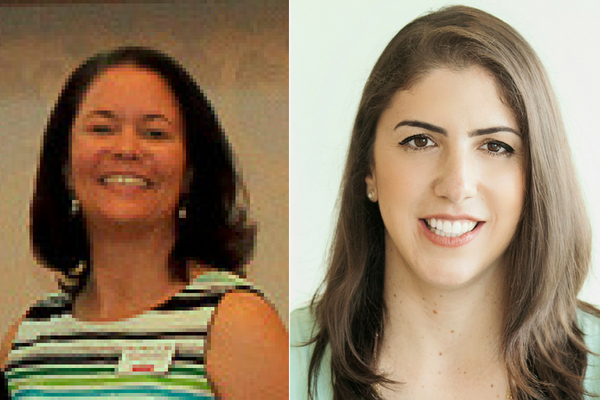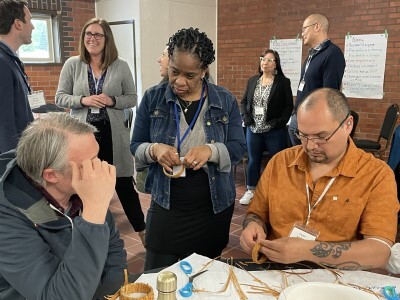Marketing Non-Traditional Programs in K-12 and Higher Ed
Topics

Next generation learning is all about everyone in the system—from students through teachers to policymakers—taking charge of their own learning, development, and work. That doesn’t happen by forcing change through mandates and compliance. It happens by creating the environment and the equity of opportunity for everyone in the system to do their best possible work.
NGLC’s Holly Morris and Dalia Hochman scan the K-20 education landscape and offer insights on marketing non-traditional programs.
Recently, Ranjan Daniels of Five Tool Learning hosted a webinar for Breakthrough Models Incubator (BMI) teams on marketing new programs. Holly Morris (Higher Education) and Dalia Hochman (K-12) scan the education spectrum and offer thoughts on where Daniels’ wisdom can be applied in marketing non-traditional programs.
Why Marketing?
Learners are consumers.
They always have been, and yet, this remains an emerging concept in academic circles.
Historically, marketing was not a focus in the public K-12 sector as attending school is compulsory. The majority of American families do not have much choice in their K-12 options, especially families on the lower end of the socioeconomic spectrum, leaving little incentive for public schools districts to spend precious resources on marketing campaigns.
Naturally, marketing has played a larger role in higher education where attendance is discretionary. Until recently, however, its focus has been brand building and brand reinforcement. Both of these contexts are shifting, however, and we’ve seen that both K-12 and higher ed can benefit from harnessing marketing insights in service of new models.
Marketing Challenges for New Models
Articulate a Compelling Value Proposition
Colleges and universities are quickly realizing that the market for 18-22 year students is fully saturated and that vastly larger, underserved or unserved markets exist in ‘nontraditional’ students—adults and/or returning students whose needs and demands differ markedly from the latter market.
Likewise, in the K-12 sector, there is significant growth in charter schools in many cities, as well as magnet, International Baccalaureate, and other select programs, which has allowed public K-12 consumers to have more choice in enrollment.
Like all other new entrants to the market, these new schools across the spectrum need to articulate a clear, compelling value proposition that will draw in prospective students and families and give target audiences the confidence to choose a new path.
Understand the Person Choosing
Daniels also told the BMI teams that “buyers solve problems” and urged them to learn more about their audiences’ problems and tailor their efforts both substantively and communicatively to solve them.
It used to be that students and the public accepted vague notions like: “We (institution X) help students (undefined demographic) take that next step in life and intellectual development.”
Such ambiguous statements aren’t cutting it with consumers anymore, and as new competency-based education (CBE) models like those of University of Wisconsin and Kaplan are steadily entering the market. These new models need to communicate clearly how they provide students with workforce-ready skills and relevant credentials because most students have enrolled in college either to increase their employability overall, or to land a very specific type of position.
In the K-12 context, that means communicating to parents that such new schools can be effective even if they do not look and feel the same as the school from which the parent graduated. The movement towards personalization in non-traditional K-12 models also allows the consumer to be considered as an individual, with a differentiated set of needs. Not all 12 year-olds, for example, learn at the same pace and through the same modalities and experiences.
Focus on the Experience and the Outcomes
As CBE emerges as a viable choice for higher ed’s new traditional student—adults age 27-44 with a job/family—there is considerable diversity in program types and no working taxonomy to classify them. What is competency to one person is mastery to another and proficiency to a third. The corollary in K-12 would be educational fads and jargon that school reformers have introduced over the decades, often confusing parents and teachers alike.
Daniels recommends focusing on the experience rather than the words to describe it.
“Tell them what it feels like to go through a CBE program in terms that are descriptive and accessible. Buyers make choices around variables they can grasp and evaluate.”
For example, he noted that for many college students, amenities such as wi-fi access or job placement services and statistics were more important than the carefully crafted competencies that institutions chose to showcase. And several institutions are doing just that, letting consumers know that CBE is flexible, and can be done when and where it works best for them. CBE is rigorous but forgiving—meaning, if you know something and can demonstrate mastery of it in two weeks, great—and if you need three tries, that’s fine, too.
In both K-12 and higher education, we’ve found that schools are most effective in marketing their models when they focus less on the theoretical innovation and more on the practical outcomes: how the nontraditional program will better meet students’ needs in the 21st century.




